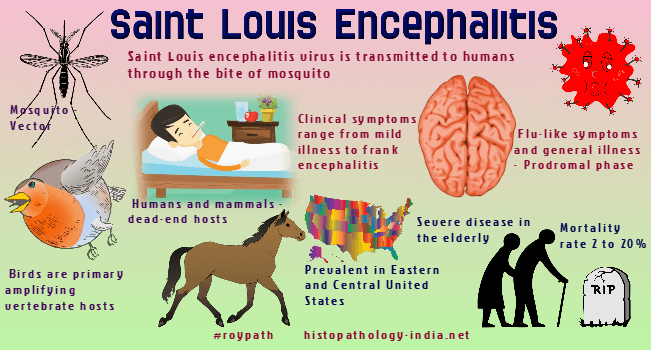|

Custom Search
|
|
Infectious Disease Online Pathology of Saint Louis Encephalitis
|

Saint Louis encephalitis virus (SLEV) is transmitted to humans through the bite of an infected mosquito. Saint Louis encephalitis is prevalent in Eastern and Central America and is the most important mosquito-borne disease in the United States. It has caused several large epidemics in recent years, the clinical picture ranging from mild febrile illness to frank encephalitis and the case fatality ranging from 2 to 20 per cent. The disease is generally milder in children than in adults, but in those children who do have disease, there is a high rate of encephalitis. The elderly are at highest risk for severe disease and death. St. Louis encephalitis is caused by the St. Louis encephalitis virus, which is an arthropod borne flavivirus. It is related to Japanese encephalitis virus (Visit: Japanese Encephalitis ) Wild birds act as the reservoir and Culex mosquitoes as the vector. Diagnosis is based on tests of blood or spinal fluid.
|
|
|
Copyright © 2021 histopathology-india.net

